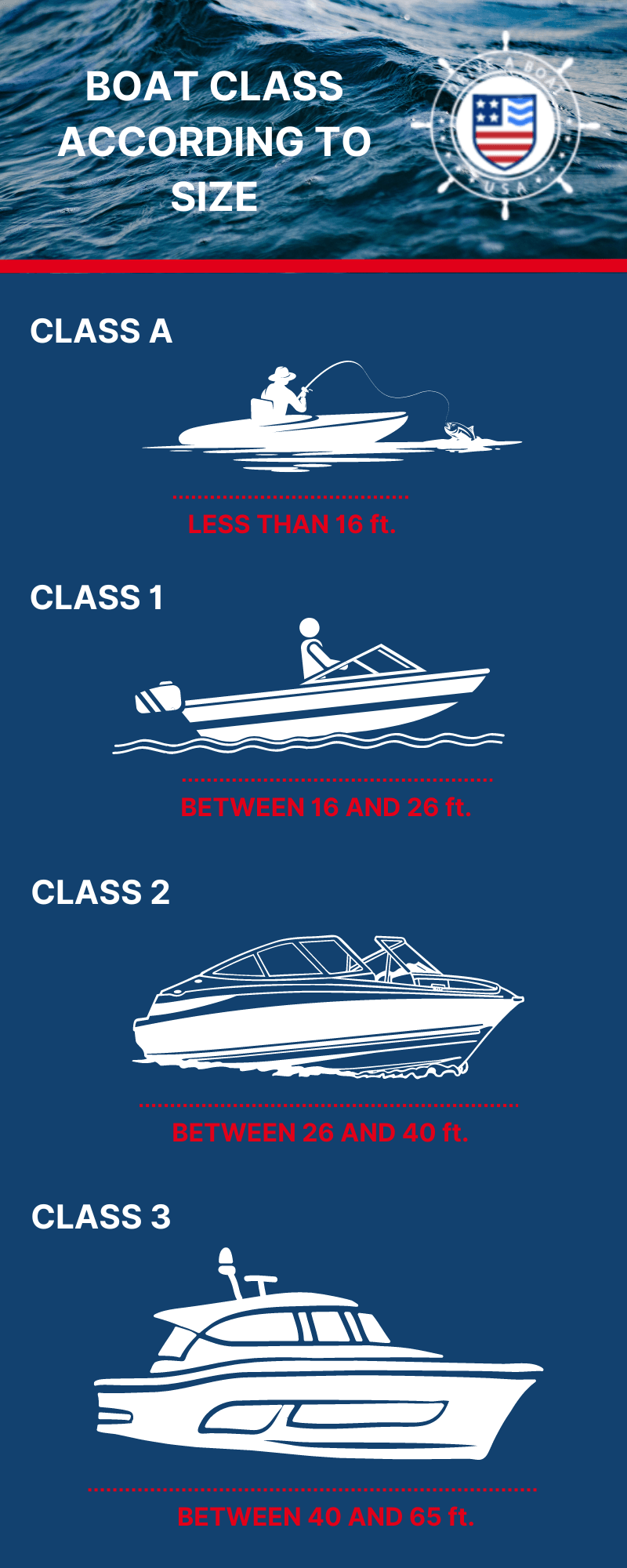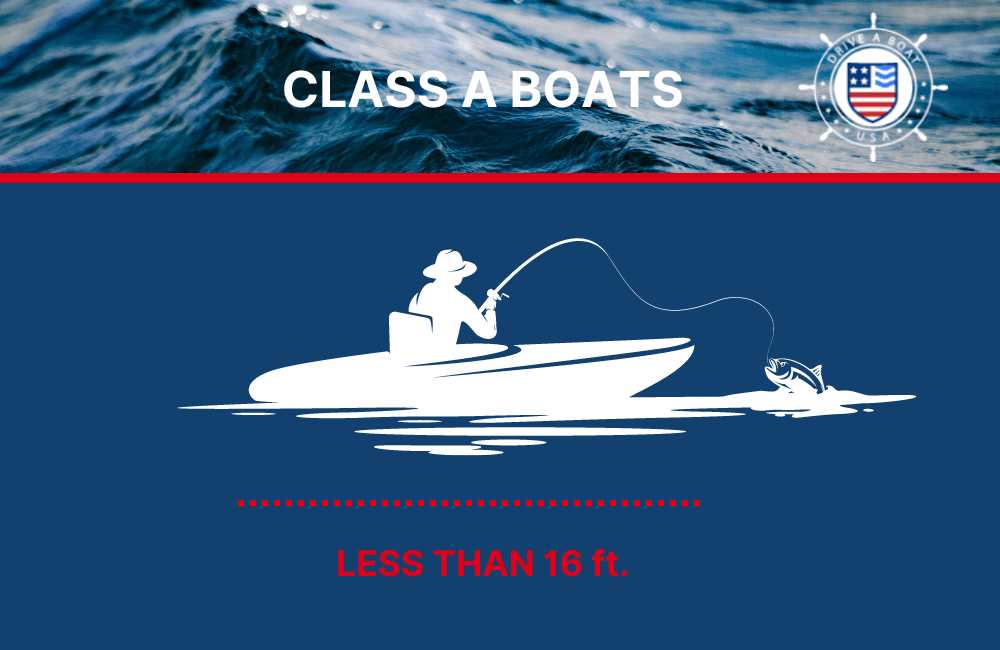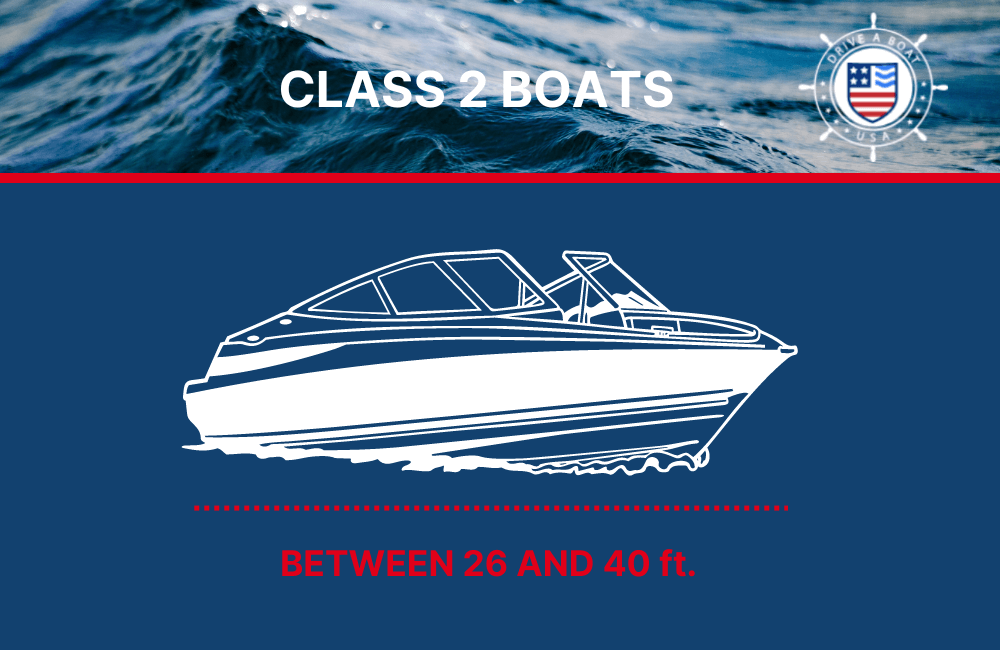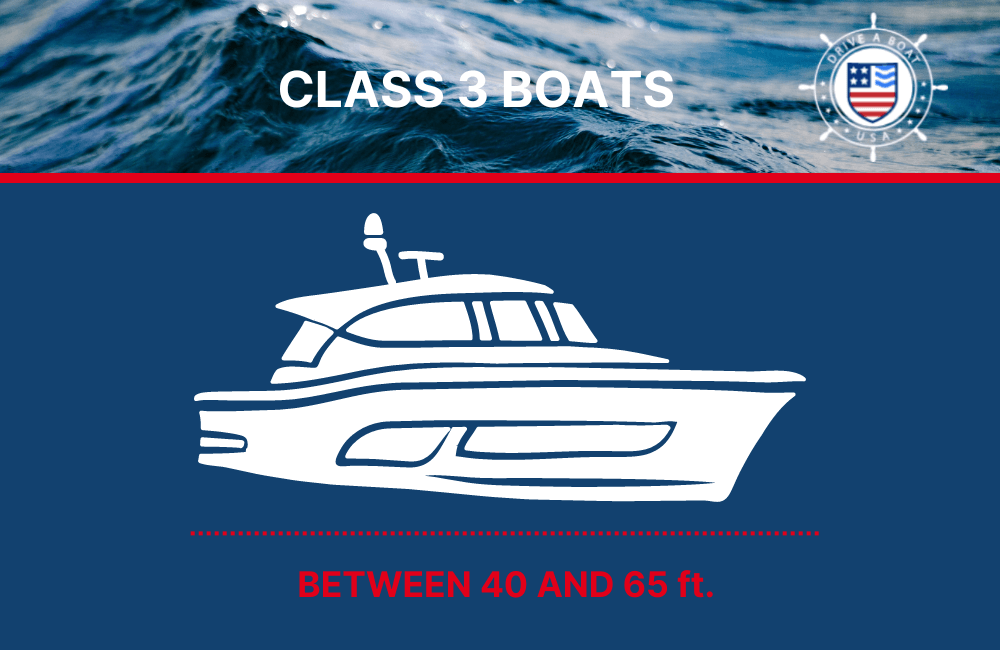Boat Sizes: Chart, Classifications and Length
To operate a boat safely and legally, you need to have the right type of safety equipment on board at all times. But how can you know what type of equipment is required for your specific type of boat?
The key is discovering your boat’s class.
And boat classes are determined by boat length.
Let’s take a look at the four different classes of recreational boats, so that you can be prepared when you take to the water.
How to measure your boat
You can measure your boat along its centre line from bow to stern, not including any extra attachments like swim platforms. Check out our page outlining the parts of a boat to help you make an accurate measurement.
Class A: Boats measuring less than 16 feet
This class includes small fishing boats, canoes, dinghies, personal watercraft and rowboats. To operate this class of boat safely, you need to have:
- Personal flotation devices (PFD) for each person on board or being towed on water skis, etc.
- A bell or whistle
- Visual distress signals (for certain bodies of water) for night-time use
- A fire extinguisher (depending on several factors)
- Ventilation
- A back-fire flame arrestor
Class 1: Boats measuring between 16 and 26 feet
This class includes pontoon boats, jet boats, aluminum fishing boats, smaller deck boats and ski boats. To operate this class of boat safely, you need to have:
- One approved Type I, II or III personal flotation device (PFD) for each person on board or being towed on water skis, etc. and one throwable Type IV device
- A bell or whistle
- Visual distress signals for day and night-time use
- A fire extinguisher (depending on several factors)
- Ventilation
- A back-fire flame arrestor
Class 2: Boats measuring between 26 and 40 feet
This class includes cabin cruisers, trawlers, sail boats, bowriders and runabouts. To operate this class of boat safely, you need to have:
- One approved Type I, II or III personal flotation device (PFD) for each person on board or being towed on water skis, etc. and one throwable Type IV device
- A bell or whistle that is audible for 1 nautical mile
- Visual distress signals for day and night-time use
- 2 fire extinguishers
- Ventilation
- A back-fire flame arrestor
Class 3: Boats measuring between 40 and 65 feet
This class includes yachts, sport fishers, catamarans, sail boats and go-fast boats. To operate this class of boat safely, you need to have:
- One approved Type I, II or III personal flotation device (PFD) for each person on board or being towed on water skis, etc. and one throwable Type IV device
- A bell or whistle that is audible for 1 nautical mile
- Visual distress signals for day and night-time use
- 3 fire extinguishers
- Ventilation
- A back-fire flame arrestor
Remember that there could be some variations in the specific type of equipment you need, even within these categories. The best way to be certain that you are prepared to go out on the water is to get your official online state approved boating license.
Learn how to equip your boat with Drive a Boat USA
Whether your boat falls into Class A, 1, 2, or 3, you are responsible for keeping the right safety equipment on board at all times.
Learn what you need to know to enjoy safe and successful boating adventures, including how to drive a boat, from Drive A Boat USA.
Contact us today to earn your official state-approved boating license and take to the water!






